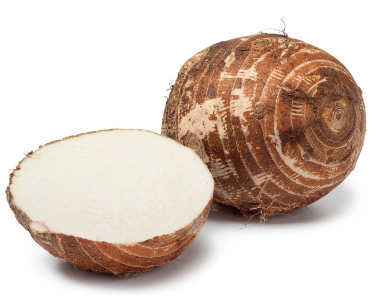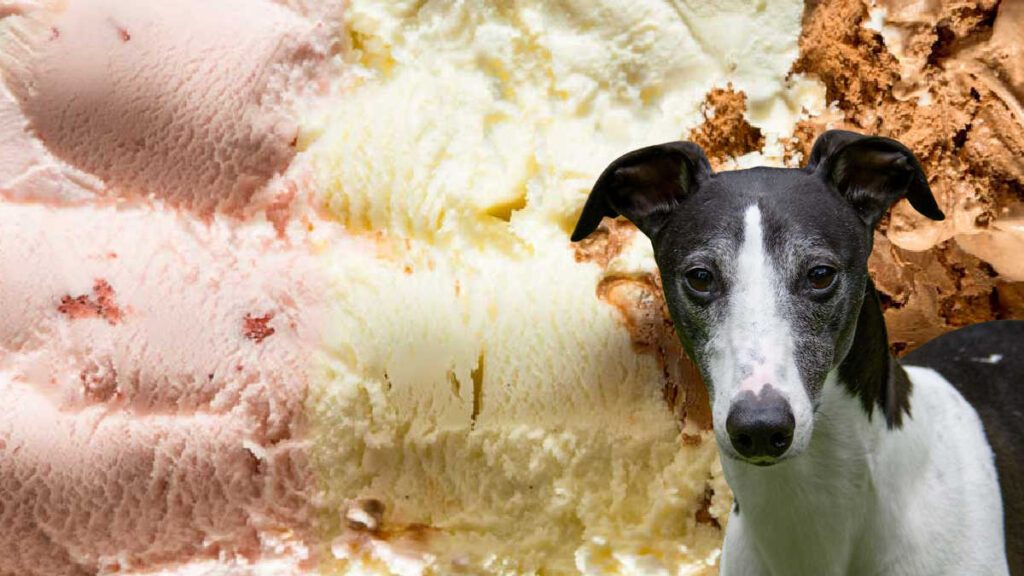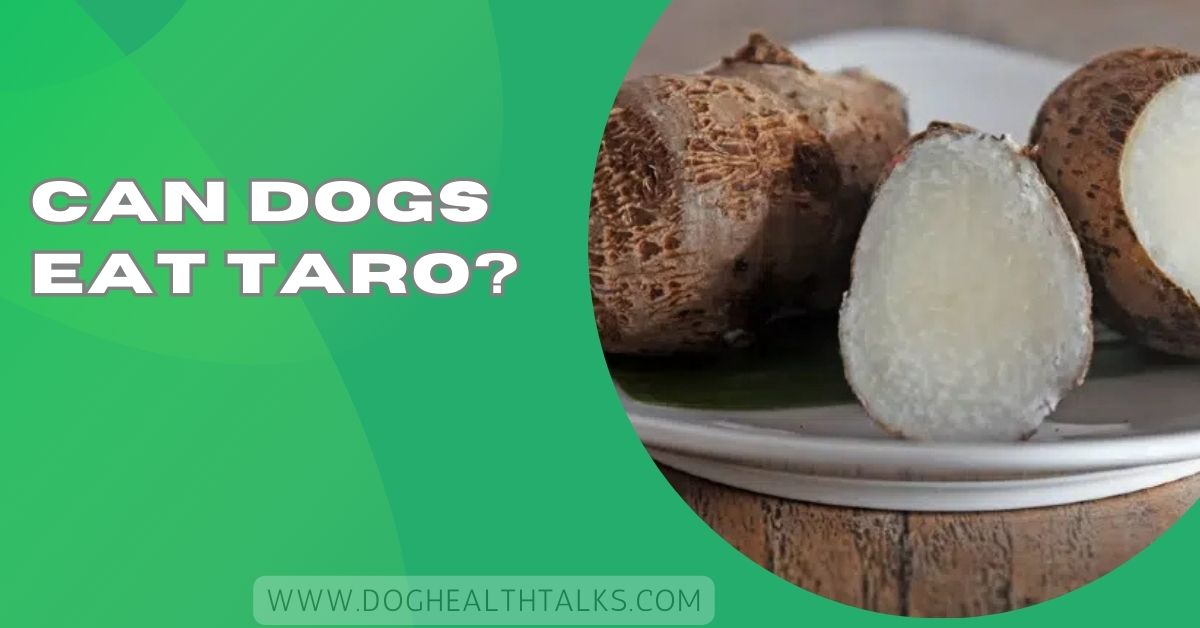As dog owners, we often wonder which foods from our own kitchens are safe to share with our furry friends. Root vegetables like sweet potatoes and carrots are commonly fed to dogs, but what about taro?
Dogs should not eat taro. This root contains calcium oxalate crystals that can be harmful to your pet, causing pain and swelling. Even cooked taro isn’t reliably safe, so it’s best to avoid sharing it with dogs.
This guide will walk you through everything you need to know about taro, its risks, symptoms of poisoning, safe alternatives, and what to do if your dog accidentally eats it.
What Is Taro?
Taro (Colocasia esculenta) is a root vegetable from the Araceae family, sometimes called “elephant ear” due to its large, broad leaves.
It is cultivated worldwide, especially in tropical and subtropical regions. Humans eat taro root in many forms—boiled, mashed, baked, fried, or ground into flour. Taro leaves are also cooked in certain cuisines after long simmering.
For humans, taro provides carbohydrates, fiber, potassium, vitamin C, and small amounts of protein. When properly cooked, it is a versatile, nutrient-rich food. However, the story is very different when it comes to dogs.
Can Dogs Eat Taro Safely?

The straightforward answer is no—dogs should not eat taro. The root, leaves, and stems of the taro plant contain insoluble calcium oxalate crystals.
These tiny, needle-like crystals can cause intense irritation when ingested, either by chewing or swallowing.
According to veterinary poison control resources such as the ASPCA, taro is considered toxic to both dogs and cats. Even a small amount of raw or undercooked taro can trigger painful reactions in your pet’s mouth and throat.
While some human preparation methods reduce the oxalate content, there is no guarantee that cooking eliminates the risk. For safety, veterinarians generally advise keeping taro completely off your dog’s menu.
Why Taro Is Dangerous for Dogs
The problem with taro stems from the presence of calcium oxalate crystals. When a dog chews on taro root or leaves, these crystals embed into the tissues of the mouth, tongue, and throat.
This leads to immediate burning, pain, and swelling. In some cases, it can even make swallowing or breathing difficult.
Unlike foods that are only toxic in large amounts, taro can cause problems quickly, even with a few bites. Both raw roots and leaves pose a risk, and the danger extends to dried, powdered, or partially cooked taro as well.
Since dogs don’t know how to spit out food once it causes discomfort, ingestion often continues until symptoms force them to stop, making the reaction worse.
Symptoms of Taro Poisoning in Dogs
If your dog manages to eat taro, you may notice symptoms within minutes to hours. Common signs include:
- Excessive drooling
- Pawing at the mouth or face
- Redness and swelling of the lips, tongue, or gums
- Vomiting or retching
- Loss of appetite
- Difficulty swallowing
- Whining or restlessness due to pain
In severe cases, swelling can extend to the throat, making it difficult for the dog to breathe. This is a medical emergency that requires immediate veterinary attention.
Also Read: Can Dogs Eat Grapes? – Don’t Miss This Safety Guide!
Does Cooking or Processing Make Taro Safe?

One reason for confusion is that humans often eat taro after it has been cooked. Heat and soaking methods can reduce the presence of calcium oxalate crystals, making the vegetable safe for consumption. Some pet owners assume the same applies to dogs.
While cooking does lower oxalate levels, it may not completely remove them. Residual crystals can still irritate your dog’s system, and there is no reliable way to measure whether the preparation has made taro completely safe.
For this reason, most veterinary experts recommend avoiding taro for dogs altogether, regardless of whether it is raw, boiled, baked, or fried.
It’s also worth noting that many taro dishes are prepared with added oils, sugar, coconut milk, or seasonings—all of which can upset a dog’s digestive system or lead to long-term health issues.
What To Do If Your Dog Eats Taro
Accidents happen. If you discover that your dog has eaten taro, here are the steps you should follow:
- Stay calm but act quickly. Remove any remaining taro from your dog’s reach.
- Check for symptoms. Look for signs such as drooling, pawing at the mouth, swelling, or vomiting.
- Rinse the mouth. Gently flushing your dog’s mouth with clean, cool water can help reduce irritation, but do not force it.
- Call your veterinarian. Even if symptoms seem mild, professional guidance is essential.
- Do not induce vomiting unless instructed. Inducing vomiting may cause more damage if oxalate crystals irritate the esophagus on the way back up.
Your vet may recommend bringing your dog in for examination. Treatment can include pain relief, antihistamines to reduce swelling, fluids to prevent dehydration, and monitoring of airway health. In serious cases, hospitalization may be required until the dog recovers.
Safe Alternatives to Taro for Dogs
If you want to share root vegetables with your pet, there are far safer choices. These options are healthy, dog-friendly, and easy to prepare:
- Sweet potatoes – Rich in fiber, vitamins A and C, and great when boiled or baked without seasoning.
- Pumpkin – A good source of fiber that supports digestion.
- Carrots – Crunchy, low-calorie snacks full of beta-carotene.
- Beets – Can be fed in moderation, providing a natural source of antioxidants.
Always cook these vegetables plain and serve in small portions to avoid stomach upset.
Read Also: Can Dogs Eat Funyuns? – Don’t Miss These Proven Facts 2025!
Prevention Tips for Dog Owners
Keeping your dog safe from taro poisoning comes down to prevention. Here are some practical tips:
- Keep taro out of reach. Store roots and prepared dishes in secure locations.
- Be careful with houseplants. Some ornamental varieties of taro (elephant ear plants) are grown indoors and outdoors. Dogs should never chew on these leaves.
- Educate your household. Family members and guests should know not to feed taro to the dog, even if it’s cooked.
- Watch your garden. If taro grows in your yard or neighborhood, supervise your dog during outdoor time.
A few simple precautions can save you from an emergency vet visit.
Can Dogs Eat Taro Raw
No, dogs should never eat raw taro. It has calcium oxalate crystals that cause burning, drooling, and swelling in the mouth. Even a small bite can upset your dog’s stomach and make breathing harder.
Can Dogs Eat Cooked Taro
Even cooked taro isn’t safe for dogs. Cooking reduces some toxins but does not completely remove them. Feeding taro can still irritate your dog’s mouth and stomach, so it’s best to avoid it entirely.
Can Dogs Eat Taro Ice Cream

Taro ice cream is unsafe for dogs. Taro itself can be harmful, and ice cream often contains sugar, dairy, or artificial flavors. These ingredients can upset a dog’s stomach and may lead to long-term health issues.
Can Dogs Eat Taro Juice
Dogs should not drink taro juice. Juicing doesn’t remove harmful crystals from taro, and it may contain sugar or additives. This combination can irritate your dog’s system and lead to discomfort or illness afterward.
Can Dogs Eat Taro Leaves
No, taro leaves are even more dangerous than the root. They hold high levels of calcium oxalate, which cause severe pain, swelling, and drooling. Dogs should never chew taro leaves or plants under any condition.
You Should Know: Can Dogs Eat Pita Chips?: Vet-Approved Guide for Pet Parents
Can Dogs Eat Taro Chips
Taro chips are not safe for dogs. Besides harmful oxalate crystals, chips are often fried in oil and heavily salted.
This can cause stomach upset, dehydration, or even more severe consequences. Safer snacks like carrots are better.
How Much Taro Is Toxic To Dogs
There’s no safe amount of taro for dogs. Even small bites may trigger drooling, vomiting, and mouth irritation.
Larger amounts increase risks of swelling and breathing issues. To protect your dog, avoid taro completely.
FAQs
1. Is Taro Dog Friendly?
No, taro is not dog-friendly. It contains crystals that hurt a dog’s mouth, throat, and stomach. Even cooked taro isn’t safe.
2. Can Dogs Eat Cooked Taro Leaves On Reddit?
No, dogs should not eat cooked taro leaves. They still contain harmful crystals that cause pain and swelling. Reddit discussions also warn against it.
3. Can Dogs Eat Taro Boba?
Dogs should never eat taro boba. Taro is unsafe, and boba contains sugar and additives. This mix can severely compromise your dog’s health.
4. Can Dogs Eat Taro Balls?
No, dogs should not eat taro balls. Taro remains unsafe even when cooked, and added sugar or flavorings make it worse for pets.
5. What If My Dog Eats Taro?
If your dog eats taro, watch for drooling, vomiting, and swelling. Contact your veterinarian promptly for assistance and follow their treatment recommendations.
6. Do Animals Eat Taro?
Some animals may chew taro plants, but many experience irritation or illness. Taro is naturally toxic, so it’s unsafe for dogs, cats, and pets.
7. Are Taro And Cassava The Same Thing?
No, taro and cassava are different plants. Both are starchy roots but unrelated. Importantly, both can be toxic to dogs if ingested.
8. Is Cassava Dog Friendly?
No, cassava is not dog-friendly. It contains cyanide compounds when raw, which harm dogs. Even cooked, it isn’t recommended as a safe food.
9. What Is Taro Made Of?
Taro is a starchy root vegetable made mostly of carbohydrates, fiber, water, and calcium oxalate crystals. Those crystals are what make taro unsafe.
10. Can My Dog Have Boba?
Dogs should not have boba. Tapioca pearls, sugar, and flavorings can upset the digestive system and cause discomfort. Boba drinks are not safe for pets.
Conclusion
Taro may be healthy for humans, but it’s dangerous for dogs. Its calcium oxalate crystals can cause pain, swelling, and serious health issues. Even cooked taro isn’t safe. Stick to dog-friendly veggies like carrots, pumpkin, or sweet potatoes instead. Keeping taro away from your pup is the best way to protect their health and avoid emergencies.

